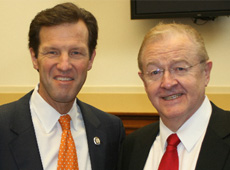Like the proverbial curate’s egg, the Ulster Unionists’ election results were good in places.
Posted By: June 02, 2014
But it’s too soon for party leader Mike Nesbitt to put the champagne on ice just yet, writes Alex Kane ALEX KANE . Belfast Telegraph. MAY 28, 2014
I can’t remember who said it, but it is very good advice nonetheless: “A party leader should never comment on an election until all of the results are in.” On Sunday morning’s Politics Show, UUP leader Mike Nesbitt was cock-a-hoop. The DUP had fallen a few percent and the UUP had risen a little. Commentators were saying that his party had had a good election and a Sunday Times headline read ‘Resurgent UUP back in the mix.’ He had clearly rattled the DUP’s Gregory Campbell, who cautioned him about getting carried away and jibed that he wouldn’t want to get lumbered with the title of “0.9% Nesbitt”. Thirty-six hours later, though, the UUP leader’s smile wasn’t quite as broad as it had been. His hopes ofJim Nicholson being the first of the unionist MEPs to be elected, while UUP/TUV transfers helped to pull Diane Dodds across the line, were dashed. (He was eventually elected after a marathon count.) Dodds improved her vote (as did Jim Allister) but the UUP had their worst-ever result: their percentage was down to just 13, meaning that they managed to fall, even though turnout since 2009 had risen by 7%. What do the council and Euro results tell us about the UUP? Well, in fairness to the party, it is worth mentioning that it was probably the best election campaign they have run in, maybe, 20 years. There were no gaffes. More importantly, there was no internal civil war over positions, or policies, the sort of thing that used to result in candidates fighting each other on radio and television programmes. The campaign literature was very good and they had a slate that included some very talented next-generation candidates. And yet, with all of that, they still managed an increase of less than 1% in the council elections. They are still tens of thousands of votes below their last previous high-point in 2005 (which was, in turn, a huge drop on five years earlier). Their tally of council seats was higher than they had predicted, but some of them came through late transfers from the TUV and Ukip. They benefited from the fact that the DUP miscalculated their strategy (they haven’t quite got a handle on the demographics of the new council areas) and over-fielded in some places, while under-fielding in others. But, to some extent, none of that matters – it’s the sort of stuff that nerds focus on. From a wider perspective, it looked as though the UUP had done well and in politics you chalk up and promote success at any and every opportunity. And if Mike Nesbitt wanted his moment in the sun – his first big elections as party leader – then it would have seemed churlish to deny him that moment. The fact was that on Sunday morning he had something to cheer, something to boast about and something to rally the troops. And, my goodness me, it’s been a very long time since a UUP leader could do that. Today, the figures suggest a much muddier reality. The UUP didn’t benefit from a rise in the Euro turnout. But the DUP, TUV and Ukip did. Which suggests that, when unionist voters didn’t have a TUV, or Ukip, option at the council elections (and in many areas they didn’t), they opted for the UUP. But when they did have that option in every area – as they did in the Euro election – then they voted in very considerable numbers for them. Even more worrying for the UUP: far from ‘soft unionists’ deserting Alliance and switching to the UUP, Alliance actually upped its vote very impressively. So, here’s the problem for the UUP: when unionists have an increased choice (as they did when PUP, Ukip and TUV were on the ballot paper), the UUP vote gets squeezed very hard. When they don’t have that choice, then the UUP vote lifts a little, but not enough to threaten the DUP any time soon. On the other end of the scale – let’s just call it the liberal unionist end – the UUP doesn’t seem to have picked up anything at all. What does all of this tell us about the chances of a UUP revival? The most important thing to acknowledge is that the DUP/UUP/TUV/Ukip (and, to a lesser extent, the PUP) are all fighting for the same type of vote. There isn’t room for them all: if there was, then the overall unionist vote would have jumped quite significantly, rather than just a little. If the UUP wants to revive to a position in which it is once again seen as the number one choice for increasing numbers of voters, then it has to be very, very clear what it stands for. Indeed, if there was ever a time to leave the Executive and carve out an identity of its own, then this is the time. The biggest challenge to the UUP is not the DUP, it is the TUV. It’s basically green-shoots-of-recovery territory for the UUP. They still have a solid, core vote, albeit an elderly one. But if unionists are going to have a choice over the next few years – which I think they will – then the UUP needs to shape up. Nesbitt sounded a little complacent on Sunday.










